↓ Download the Full Newsletter (PDF)
One Tree, Witnessing One Hundred Years of Change
Andrew Zimolzak, Board member
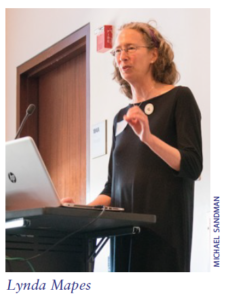 THE LIFE STORY of one tree is in truth the story of the constant change in an entire forest over a century. This was one key message that Lynda Mapes presented at the 40th anniversary celebration of the Friends of Hall’s Pond on June 12. Mapes lived at the Harvard Forest from 2014 to 2015, studying her “witness tree,” a 100 year old red oak. The term “witness tree” can refer to trees that mark key points on property lines, but for Mapes, it also suggests that one tree has witnessed the history of the forest and society.
THE LIFE STORY of one tree is in truth the story of the constant change in an entire forest over a century. This was one key message that Lynda Mapes presented at the 40th anniversary celebration of the Friends of Hall’s Pond on June 12. Mapes lived at the Harvard Forest from 2014 to 2015, studying her “witness tree,” a 100 year old red oak. The term “witness tree” can refer to trees that mark key points on property lines, but for Mapes, it also suggests that one tree has witnessed the history of the forest and society.
Mapes discussed phenology, the study of periodic natural events, as practiced by John O’Keefe at the Harvard Forest. O’Keefe’s research group has studied the timing of leaf development and fall for the same 50 trees since 1990. Aspects of phenology can even be traced to Henry David Thoreau, who collected grasses 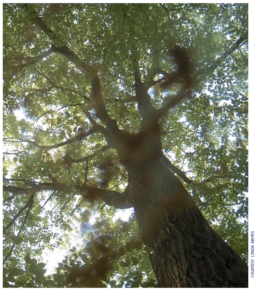 and sedges. Mapes noted that one third of the species Thoreau catalogued are now locally extinct, but on the other hand, animal diversity has increased since his time. Then, much of the land was used for farming, and no animals larger than a muskrat were present, but as farms became disused, trees returned to the landscape, followed by larger animals such as deer.
and sedges. Mapes noted that one third of the species Thoreau catalogued are now locally extinct, but on the other hand, animal diversity has increased since his time. Then, much of the land was used for farming, and no animals larger than a muskrat were present, but as farms became disused, trees returned to the landscape, followed by larger animals such as deer.
Similarly, trees record the history of changes in the climate over hundreds of years. Recent climate change has adversely affected many species, but red oaks have in fact grown faster, illustrating that the life story of just one tree parallels the story of the planet as a whole. Lynda Mapes’ website can be found at www.lyndavmapes.com. Lynda Mapes COURTESY LYNDA MAPES MICHAEL SANDMAN Witness Tree, May 20, 2015. From the web camera that uploads images of the tree every half hour to the Harvard Forest home page.
From the Co-Presidents
Ellen Forrester and Frank Caro
 THE HIGHLIGHT OF OUR YEAR was our 40th anniversary celebration held at Wheelock College on June 12. We have reason to be proud of being the first “friends” organization for a park in Brookline. Further, we have been a lively organization throughout our 40 year history. Our featured speaker, Lynda Mapes, made the celebration memorable with a very engaging presentation. On the first page, Andy Zimolzak provides an overview of the talk. We are thankful to the Brookline Parks and Open Space Division for co-sponsoring the celebration. Brookline Bank provided welcome financial support. Many board members served on the host committee. Among the volunteers who helped with the celebration were Deborah Myers, Barbara Mackey, Ferris Hall, Deanne Morse, Janet Wynn, and Helen Herman.
THE HIGHLIGHT OF OUR YEAR was our 40th anniversary celebration held at Wheelock College on June 12. We have reason to be proud of being the first “friends” organization for a park in Brookline. Further, we have been a lively organization throughout our 40 year history. Our featured speaker, Lynda Mapes, made the celebration memorable with a very engaging presentation. On the first page, Andy Zimolzak provides an overview of the talk. We are thankful to the Brookline Parks and Open Space Division for co-sponsoring the celebration. Brookline Bank provided welcome financial support. Many board members served on the host committee. Among the volunteers who helped with the celebration were Deborah Myers, Barbara Mackey, Ferris Hall, Deanne Morse, Janet Wynn, and Helen Herman.
We are pleased to have three new board members: Deborah Stone, Andrew Zimolzak, and Kate Silbaugh. Reluctantly, we accepted the resignation of Ferris Hall who has moved to Lasell Village in Newton. Our maintenance volunteers make regular use of the distinctive home-made wheel barrow that Ferris donated when he moved from his home on Amory Street. We fondly remember Ferris making use of the wheelbarrow in his energetic clean-up efforts on Community Days.
The bench we purchased a year ago to honor Betsy Shure Gross for her many years of service has been installed near the Beacon Street entrance to the Sanctuary. The Town has purchased several willow trees that will be planted near the bench to form a willow grove.
 Reflecting the Town’s long-term commitment to the Hall’s Pond Sanctuary, the Parks and Open Space Division contracted this year with landscape architect Ginna Johnson for a comprehensive assessment of the vegetation in the Sanctuary. Her report provides helpful lists of trees, shrubs, and herbaceous plants that might be added over time. Our aim is to emphasize native trees, shrubs, and perennials, encourage biodiversity, and attract wildlife. The recommendations complement the plan for the Sanctuary approved by the Conservation Commission in 2010. (A map of the plan can be found on our website.) The consultant’s report provides helpful ideas about what we should plant when opportunities present themselves. Our volunteers are vigilant in controlling invasive vegetation that appears in the Sanctuary.
Reflecting the Town’s long-term commitment to the Hall’s Pond Sanctuary, the Parks and Open Space Division contracted this year with landscape architect Ginna Johnson for a comprehensive assessment of the vegetation in the Sanctuary. Her report provides helpful lists of trees, shrubs, and herbaceous plants that might be added over time. Our aim is to emphasize native trees, shrubs, and perennials, encourage biodiversity, and attract wildlife. The recommendations complement the plan for the Sanctuary approved by the Conservation Commission in 2010. (A map of the plan can be found on our website.) The consultant’s report provides helpful ideas about what we should plant when opportunities present themselves. Our volunteers are vigilant in controlling invasive vegetation that appears in the Sanctuary.
 We value your membership in the Friends. Your dues and additional contributions make it possible for us to purchase new trees, shrubs, perennials, annuals, and bulbs. We are responsible for all of the flowering plants in the formal garden. Our efforts are important in complementing and supplementing what the Town is able to invest in the Sanctuary. If you are already a member, please renew. If you are not yet a member, please join! Any donation amount is fully tax deductible. Regular dues are only $25 for individuals and $35 for families.
We value your membership in the Friends. Your dues and additional contributions make it possible for us to purchase new trees, shrubs, perennials, annuals, and bulbs. We are responsible for all of the flowering plants in the formal garden. Our efforts are important in complementing and supplementing what the Town is able to invest in the Sanctuary. If you are already a member, please renew. If you are not yet a member, please join! Any donation amount is fully tax deductible. Regular dues are only $25 for individuals and $35 for families.
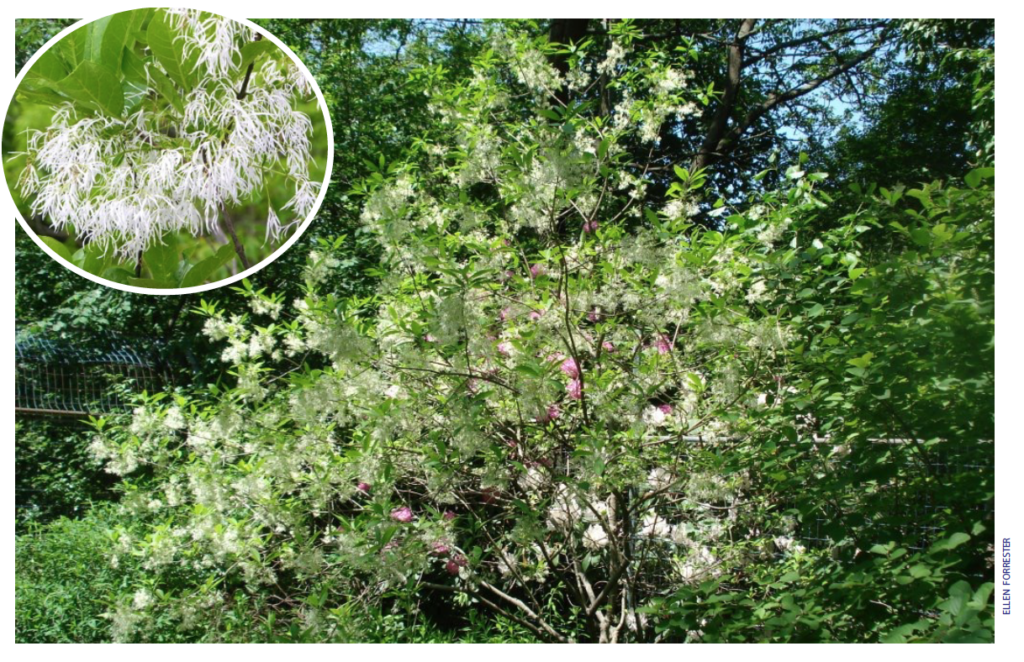 Chionanthus virginicus, fringetree
Chionanthus virginicus, fringetree
Ellen Forrester, Co-President
HALL’S POND SANCTUARY is fortunate to have a beautiful maturing specimen of this North American native shrub in the border of the formal garden.
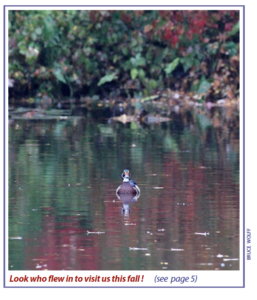 The chionanthus is a medium-to-large shrub perfect as a small specimen tree or as a backdrop in a larger border or garden edge. In the spring it has beautiful white, fragrant fringe-like blooms that give it its common name, “fringetree.” The fall color is a shining yellow. These attributes are more visible if the shrub is situated against a backdrop of evergreen trees and larger shrubs.
The chionanthus is a medium-to-large shrub perfect as a small specimen tree or as a backdrop in a larger border or garden edge. In the spring it has beautiful white, fragrant fringe-like blooms that give it its common name, “fringetree.” The fall color is a shining yellow. These attributes are more visible if the shrub is situated against a backdrop of evergreen trees and larger shrubs.
The blossoms are finally visible late in the spring, May or June, just before the leaves emerge. Have patience with this plant because of this late break of dormancy and bloom, you may have thought it did not survive the winter.
The tree color and blossom are main reasons to include this shrub in your plant palette, but it is also quite beneficial to browsing wildlife, migrating birds and butterflies, and also for nectar and larval food sources.
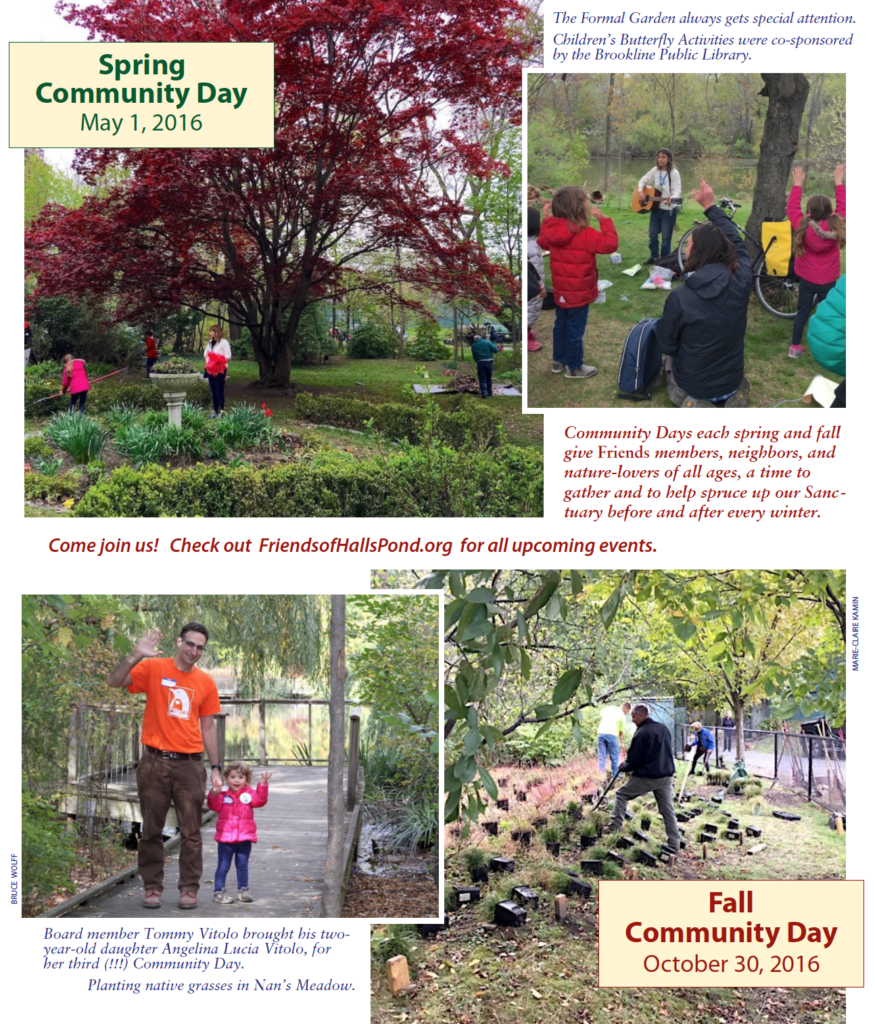
And To Think That I Saw It Off Beacon Street
Deborah Stone, Board member
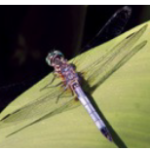 HALL’S POND SANCTUARY is way too urban to work: a smidgeon of forested land, crimped between two busy Boston thoroughfares; a small pond clogged by algae bloom and oils from ancient white cedar trees and used as a receptacle for Brookline’s storm water; and a boardwalk that invites litterbugs along with appreciative strollers. With all that, I wouldn’t be surprised to see an occasional rat from the Powell Street dumpsters out for a drink at the Hall’s Pond Bar.
HALL’S POND SANCTUARY is way too urban to work: a smidgeon of forested land, crimped between two busy Boston thoroughfares; a small pond clogged by algae bloom and oils from ancient white cedar trees and used as a receptacle for Brookline’s storm water; and a boardwalk that invites litterbugs along with appreciative strollers. With all that, I wouldn’t be surprised to see an occasional rat from the Powell Street dumpsters out for a drink at the Hall’s Pond Bar.
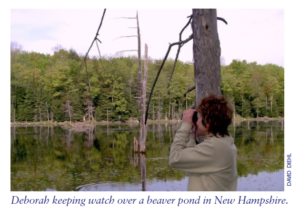 Then one day last March, a large rodent glided toward me, showing its liquid brown eyes before it dove underwater near some hanging branches. It was, I learned, neither a giant rat nor an otter as I’d hoped, but a muskrat, and like everything else I see at Hall’s Pond, it filled me with awe.
Then one day last March, a large rodent glided toward me, showing its liquid brown eyes before it dove underwater near some hanging branches. It was, I learned, neither a giant rat nor an otter as I’d hoped, but a muskrat, and like everything else I see at Hall’s Pond, it filled me with awe.
In May I brought a friend to the sanctuary. Standing on the observation deck at the northern end, we noticed a pair of dragonflies flying around attached, obviously mating. I’d seen the dragonfly mating flight many times before, but never what soon followed because I’d never been close enough or waited long enough to watch. The pair landed on a lily pad and gradually the one on top pushed the other one backwards off the lily pad until she (we presumed) was about to go into the drink. Is he drowning her, we wondered? It sure looked that way, but she didn’t struggle against him until it was almost too late. Then she climbed back up on the pad, with his apparent permission.
 This same backward-drowning-dance happened twice more over twenty minutes or so, while my friend and I fumed about domestic violence in the animal kingdom. Finally, the male left the female sitting safely on top of the pad, but continued to fly circles around her from a few feet above. Intrigued and baffled, we Googled “dragon fly mating” and learned what we were watching. A male dragonfly pushes on the female after mating to force her ovipositor under water and make sure she deposits his future progeny on the bottom side of a leaf. Mission accomplished, he hovers over her for a good long while to make sure no other males can get to her.
This same backward-drowning-dance happened twice more over twenty minutes or so, while my friend and I fumed about domestic violence in the animal kingdom. Finally, the male left the female sitting safely on top of the pad, but continued to fly circles around her from a few feet above. Intrigued and baffled, we Googled “dragon fly mating” and learned what we were watching. A male dragonfly pushes on the female after mating to force her ovipositor under water and make sure she deposits his future progeny on the bottom side of a leaf. Mission accomplished, he hovers over her for a good long while to make sure no other males can get to her.
At Hall’s Pond I’ve seen Great Blue Herons, sometimes one, sometimes a pair, and once I saw one catch its fish dinner in the cattail reeds. I’ve seen a Black- Crowned Night Heron, but haven’t yet seen the Green Heron that reportedly shows up once in a while. Last spring I watched a cormorant dive for its dinner, and after seeing it down eight 5- or 6-inch fish within a few minutes, I marveled at the stomach capacity of the bird, not to mention the fecundity of our pond.
And then there are the turtles. On a sunny day you can see them all stacked up on the dead branches. When the turtles are out, you know life is good and they remind you to savor what the universe offers.
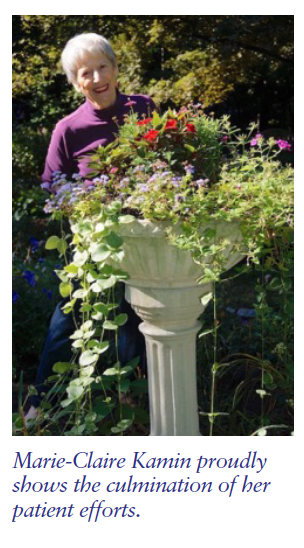 Volunteer Maintenance Team
Volunteer Maintenance Team
Frank Caro, Co-President and Volunteer Coordinator
Photos by Helen Herman, Board member
THROUGHOUT the growing season, the Friends’
volunteer maintenance team continues to work in the formal garden and Sanctuary. Our team has scheduled sessions twice a month from spring through the fall, grooming the formal garden and controlling invasive species in the Sanctuary. The maintenance team supplements the work done by the larger number of volunteers who participate in the spring and fall Community days.
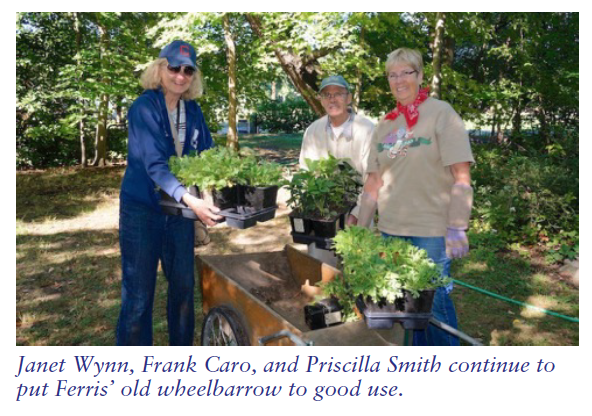 Our emphasis this year was on improvements in the formal garden. We did some major pruning of shrubs to open up more space for herbaceous plants. The culmination was a special session in mid-September when we planted many new perennials. Our emphasis was on bee and butterfly attractors including : Eupatorum (joe pye weed), Agastache (anise hyssop), Asclepia (butterfly weed), and Symphotrichum (New England aster). We also beefed up some of our existing plants including Hellebore, Geranium, Chelone, and Echinacea. We can look forward to more interesting seasonal displays in the formal garden next year. Since we emphasized plants that are good pollinators, we hope to attract more bees and butterflies.
Our emphasis this year was on improvements in the formal garden. We did some major pruning of shrubs to open up more space for herbaceous plants. The culmination was a special session in mid-September when we planted many new perennials. Our emphasis was on bee and butterfly attractors including : Eupatorum (joe pye weed), Agastache (anise hyssop), Asclepia (butterfly weed), and Symphotrichum (New England aster). We also beefed up some of our existing plants including Hellebore, Geranium, Chelone, and Echinacea. We can look forward to more interesting seasonal displays in the formal garden next year. Since we emphasized plants that are good pollinators, we hope to attract more bees and butterflies.
We were also severely challenged by the extreme drought that began in the spring and continued throughout the summer. We did some carefully targeted maintenance work to sustain the most vulnerable plantings in the formal garden and meadow.
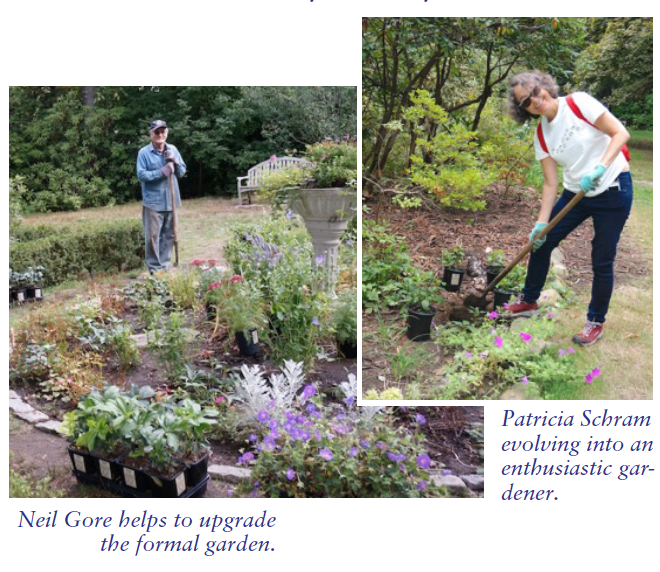 Gore, and Helen Herman. Our newcomers included Deborah Stone, Lea Grossman, and Betty Goldstein. Harry Breger, Fran Givelber, Ellen Forrester, Mary Klatt, James Perrin, Pat and Bob Schram, and Bruce Wolff also were active.
Gore, and Helen Herman. Our newcomers included Deborah Stone, Lea Grossman, and Betty Goldstein. Harry Breger, Fran Givelber, Ellen Forrester, Mary Klatt, James Perrin, Pat and Bob Schram, and Bruce Wolff also were active.
Again this year, Marie-Claire Kamin took special responsibility for the center of the formal garden including both the urn and the surround flower bed. Janet Wynn found that she had a special aptitude for deep pruning of
shrubs, and Priscilla Smith and Neil Gore did the heaviest work in controlling the invasive vines in the Sanctuary.
We welcome newcomers whether they come frequently or only occasionally. We provide equipment and on-the-job training to new volunteers. We find light work for those who want it. Because most of our volunteers are retired, most of our sessions are held on weekday mornings. We will add weekend volunteer sessions in the formal garden if there is enough demand to make Saturday or Sunday sessions viable.
fank.g.caro@gmail.com
617-739-9228
Two Favorite Birds at Hall’s Pond
By Neil Gore, Board member
I WAS FIRST DRAWN to birdwatching—or “birding” as it is now commonly called—in Ann Arbor, Michigan, when I first saw a Great Blue Heron. I was a
westruck that such a huge, prehistoric-looking bird could be frequently found near a city. How could I have overlooked that?! At Hall’s Pond, many people have become very attached to our often-seen Great Blues.
Another favorite bird of mine is opposite in many ways—subtle, somewhat secretive, small, drab, not frequently seen unless one looks or listens carefully for it. This is the Northern Waterthrush. It is actually a Warbler, but it goes against type: warblers are usually bright and colorful, flitting unpredictably around the trees and especially treetops, typically singing in soft buzzy little insect-like trills.
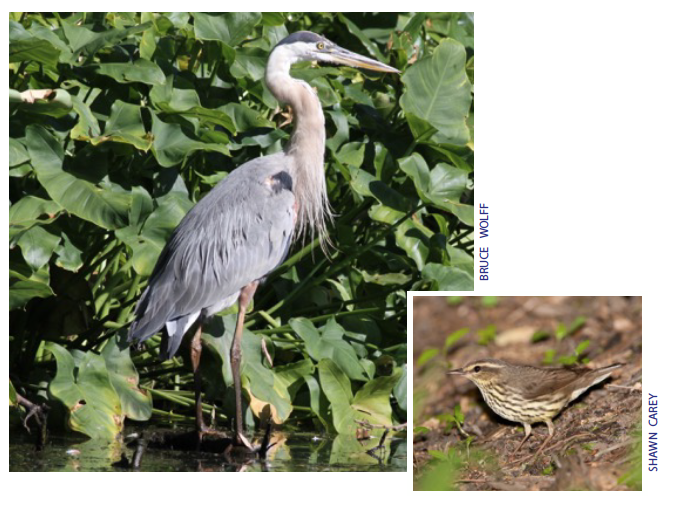 But the Northern Waterthrush sticks close to the ground; in fact, it feeds almost exclusively on small insect life exactly at the water’s edge; almost always slow-moving or still water. So at Hall’s Pond, you know exactly where to look for it. It’s still not easy to see, for it prefers (as many birds do) thickets.
But the Northern Waterthrush sticks close to the ground; in fact, it feeds almost exclusively on small insect life exactly at the water’s edge; almost always slow-moving or still water. So at Hall’s Pond, you know exactly where to look for it. It’s still not easy to see, for it prefers (as many birds do) thickets.
If seeing it is a challenge, there is another way. During the middle period of Spring migration— mid-April to early May—I am listening for a fairly loud, interesting song which I haven’t heard for a long time, and is puzzling yet strangely familiar. Then eventually I remember: Northern Waterthrush! Spring is definitely here!
